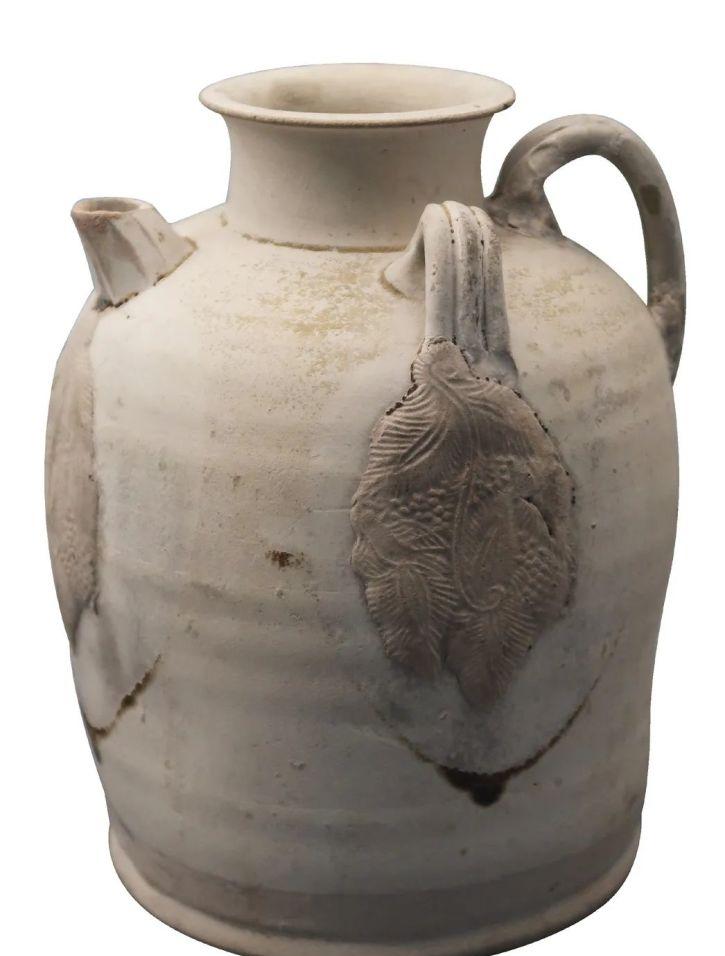Tang Dynasty ceramics show the special status of Yangzhou, Ningbo and other places on the Maritime Silk Road, and also provide research materials for exploring the trade routes of the Tang Dynasty to export ceramics overseas.

▌[Tang] Changsha kiln green glaze paste date pattern holding pot
Height 21.5cm Caliber 7.5cm Base diameter 14cm
The Shipwreck Of Blackstone came out of the water in 1998
Collection of Hunan Provincial Museum
More typical utensils, such as Changsha kiln green glaze paste date pattern holding pot.
In 1998, the shipwreck of the Black Stone came out of the water a Changsha kiln blue glaze paste date pattern holding pot. The jug flow and double series are decorated with a date palm pattern with a mold-print appliqué technique. Mold printing appliqué is a major feature of Changsha kiln decorative arts, common patterns such as date palm pattern, animal pattern, character pattern and so on.
The plant ornament of this pot is grape-like, and the leaves are shaped like coconut leaves, called "date palm pattern" or "date coconut pattern". Date palms are mostly produced in the deserts of North Africa and the Arabian Peninsula, and the jujube pattern is abundantly present on the Black Stone Izumi Changsha kiln, reflecting the introduction of this popular Plant Pattern of West Asia into the production of Chinese porcelain in order to adapt to the aesthetic preferences of the West Asian region. With the ornamentation, you can refer to the appliqué date palm pattern pot excavated from the Dongfeng Brick Factory in Yangzhou.
Yangzhou Dongfeng Brick Factory was excavated
This article is selected from the 2019 5th issue of the "Collection" magazine "Interpretation of the Tang Porcelain of the Maritime Silk Road Shipwreck and Trade Porcelain Exhibition"" article, for more content, please pay attention to the current issue of the magazine.
This article is excerpted from the article "Talking about the Glazed Porcelain of the Furnace of the Past" in the 4th issue of the "Collection" magazine in 2019, please pay attention to the current issue of the magazine for more content.